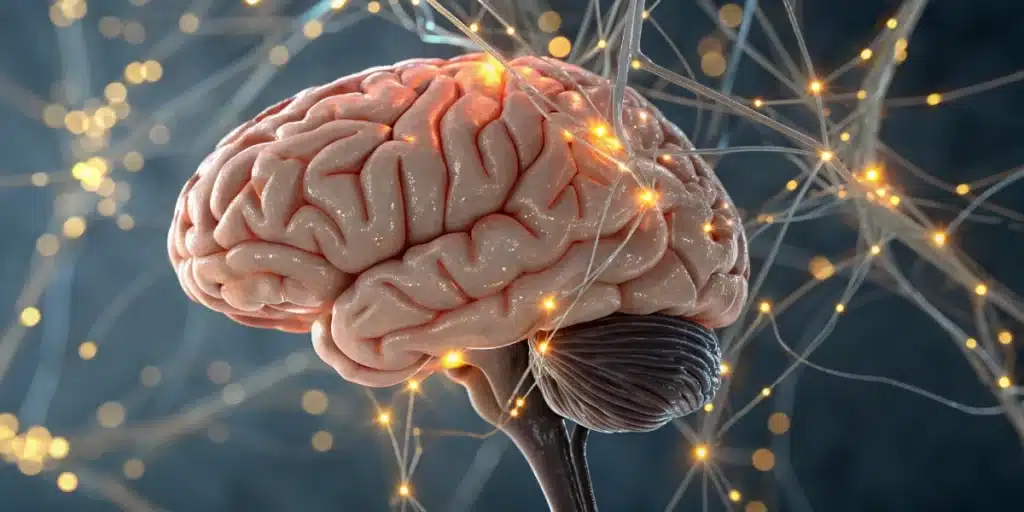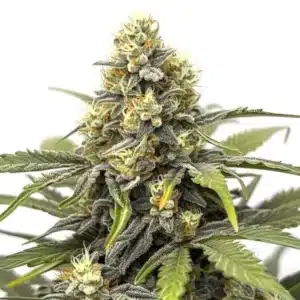
What Is Anandamide? Key Facts and Benefits
Introduction to Anandamide
Anandamide is a fascinating endogenous cannabinoid that plays a significant role in the human body. Discovered in 1992 by the legendary researcher Dr. Raphael Mechoulam and his team, the same scientist credited with first isolating THC, it was identified as the first naturally occurring cannabinoid. (Dr. Mechoulam passed away in March 2023, leaving a monumental legacy in cannabinoid science.) The name ‘anandamide’ is derived from the Sanskrit word ‘ananda,’ meaning bliss or joy, which perfectly encapsulates its effects on the human experience. Anandamide is synthesized from the membrane phospholipids in the brain and other tissues, acting as a neurotransmitter that binds to cannabinoid receptors.
This molecular marvel is often dubbed the “bliss molecule” due to its association with feelings of happiness and well-being. Its discovery opened the doors to a deeper understanding of the endocannabinoid system, which is integral to maintaining balance within the body. With anandamide as a key player, the endocannabinoid system helps regulate mood, appetite, sleep, and even pain perception.
Recommended Strains
Amnesia
|
|
THC | 15% - 20% (Medium) |
|
|
Type | Feminized |
|
|
Yield | Medium |
|
|
Phenotype | 30% Indica / 70% Sativa |
Cafe Racer
|
|
THC | 25% (High) |
|
|
Type | Feminized |
|
|
Yield | Medium |
|
|
Phenotype | 30% Indica / 70% Sativa |
Its Importance in the Human Body
Anandamide is not just a chemical compound; it’s a vital component for overall health and wellness. It interacts with our body’s endocannabinoid system, which includes receptors, enzymes, and endogenous cannabinoids. The receptors, mainly CB1 and CB2, are responsible for mediating the effects of anandamide. The presence of these receptors throughout the body highlights the importance of anandamide in maintaining homeostasis.
Research has shown that anandamide levels can vary based on factors such as stress, diet, and exercise. By playing a crucial role in regulating many bodily functions, anandamide contributes to our emotional and physical well-being.
Promos & Deals
Biological Functions of Anandamide
Impact on Mood and Emotion
The effects of anandamide on mood and emotion are profound. It has been linked to the regulation of emotions, influencing feelings of happiness, contentment, and even anxiety. When anandamide binds to cannabinoid receptors in the brain, it can enhance mood and promote feelings of joy. This relationship sheds light on why some individuals may seek out cannabis, which contains THC, a compound that mimics anandamide’s effects.
Interestingly, low levels of anandamide have been associated with mood disorders such as depression and anxiety. Activities that promote the natural production of anandamide, such as exercise, meditation, and even chocolate consumption, can help enhance mood.
Role in Pain and Stress Regulation
Anandamide plays a crucial role in modulating pain and stress responses. By interacting with CB1 receptors in the brain, it can inhibit the perception of pain, providing a natural analgesic effect. This property makes anandamide a focal point in research related to pain management.
Moreover, anandamide’s influence on stress regulation cannot be overlooked. It can help mitigate the physiological effects of stress, aiding in relaxation and recovery. By promoting a sense of calm, anandamide serves as a natural ally in coping with life’s challenges.

Anandamide and the Endocannabinoid System
Interaction with Cannabinoid Receptors
The endocannabinoid system is a complex network that plays a vital role in regulating various physiological processes. This system is so fundamental to our health that it begins to develop while we are still a fetus, playing a crucial role in helping to form our other organic systems. This early development is why cannabinoid receptors are found so widely throughout the entire human body. Anandamide interacts primarily with the CB1 and CB2 receptors. CB1 receptors are predominantly located in the brain and central nervous system, while CB2 receptors are mainly in the immune system and peripheral tissues.
When anandamide binds to these receptors, it triggers a cascade of biological responses that influence mood, pain sensation, and immune function. This interaction is critical for maintaining balance and homeostasis within the body.
Maintaining Homeostasis in the Body
Homeostasis refers to the body’s ability to maintain a stable internal environment. Anandamide plays a pivotal role in achieving this balance. By modulating various physiological processes, it helps regulate appetite, sleep, immune responses, and stress levels. An imbalance in anandamide levels can lead to various health issues, emphasizing the importance of understanding its role in the endocannabinoid system.
Therapeutic Potential of Anandamide
The therapeutic potential of anandamide is generating significant interest in the field of mental health. Studies have shown that increasing anandamide levels can have a positive impact on anxiety and depression. As our understanding of anandamide deepens, the potential applications for wellness and health are vast. Integrating practices such as regular physical activity, a balanced diet, and mindfulness techniques can contribute to optimal anandamide levels.
Comparison with THC and CBD
Anandamide, THC, and CBD share a common ground as cannabinoids, yet they differ significantly in their chemical structures. Anandamide is an endogenous cannabinoid, meaning it is naturally within the body. In contrast, THC and CBD are phytocannabinoids found in cannabis plants.
The structural differences lead to distinct interactions with cannabinoid receptors. THC binds to CB1 receptors, producing psychoactive effects, while CBD has a more complex interaction profile. Anandamide’s unique structure allows it to interact seamlessly with the body’s endocannabinoid system, providing a natural means of achieving balance.

FAQs about what is anandamide
What exactly is anandamide and how was it discovered?
Anandamide is an endogenous cannabinoid that plays a key role in regulating mood, pain, and other physiological processes. It was discovered in 1992 by researchers Raphael Mechoulam and his team, who identified it as the first naturally occurring cannabinoid.
How does anandamide influence mood and stress levels?
Anandamide influences mood and stress levels by interacting with cannabinoid receptors in the brain, promoting feelings of happiness and well-being. Low levels of anandamide have been linked to mood disorders, indicating its importance in emotional regulation.
Can lifestyle choices impact anandamide production in the body?
Yes, lifestyle choices such as diet, exercise, and stress management can significantly impact anandamide production. Engaging in regular physical activity, consuming a balanced diet rich in omega fatty acids, and practicing mindfulness.



















